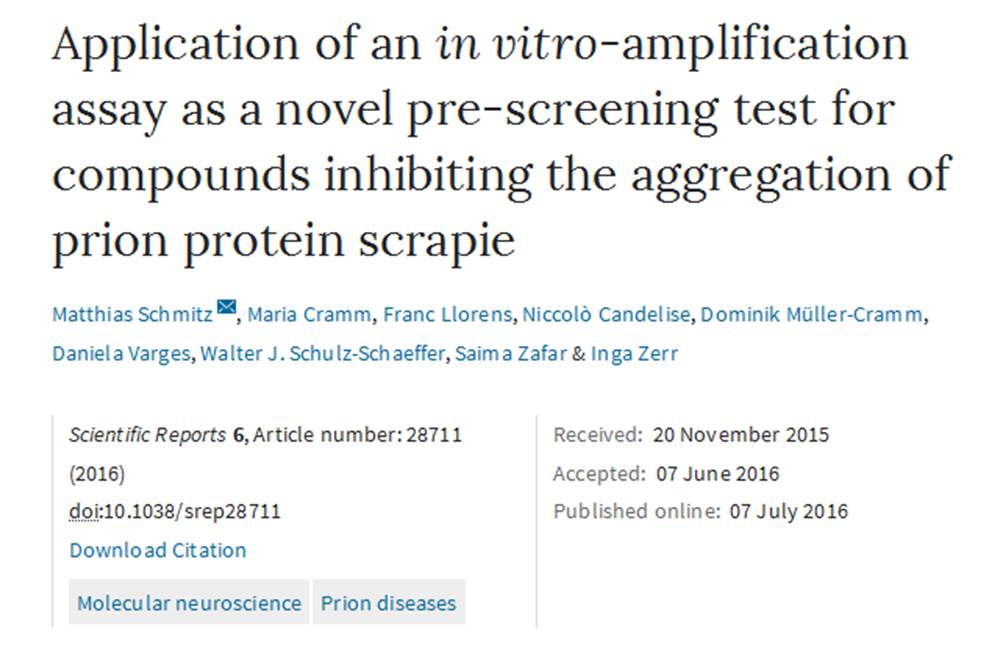 «Application of an in vitro-amplification assay as a novel pre-screening test for compounds inhibiting the aggregation of prion protein scrapie» has been published in Scientific Reports. This research was supported in part by JPND through the DEMTEST project, selected under the 2011 biomarkers call.
«Application of an in vitro-amplification assay as a novel pre-screening test for compounds inhibiting the aggregation of prion protein scrapie» has been published in Scientific Reports. This research was supported in part by JPND through the DEMTEST project, selected under the 2011 biomarkers call.
Yearly Archives: 2016
While strokes are known to increase risk for dementia, much less is known about diseases of large and small blood vessels in the brain, separate from stroke, and how they relate to dementia. Diseased blood vessels in the brain itself, which commonly is found in elderly people, may contribute more significantly to Alzheimer’s disease dementia than was previously believed, according to new study results published in The Lancet Neurology.
“Cerebral vessel pathology might be an under-recognized risk factor for Alzheimer’s disease dementia,” the researchers wrote.
The study analyzed medical and pathologic data on 1,143 older individuals who had donated their brains for research upon their deaths, including 478 (42 percent) with Alzheimer’s disease dementia. Analyses of the brains showed that 445 (39 percent) of study participants had moderate to severe atherosclerosis — plaques in the larger arteries at the base of the brain obstructing blood flow — and 401 (35 percent) had brain arteriolosclerosis — in which there is stiffening or hardening of the smaller artery walls.
The study found that the worse the brain vessel diseases, the higher the chance of having dementia, which is usually attributed to Alzheimer’s disease. The increase was 20 to 30 percent for each level of worsening severity. The study also found that atherosclerosis and arteriolosclerosis are associated with lower levels of thinking abilities, including in memory and other thinking skills, and these associations were present in persons with and without dementia.
The study examined which cognitive difficulties are caused by vessel diseases and whether vessel disease and Alzheimer’s are more destructive in tandem than they would be alone. An editorial in The Lancet Neurology that accompanied the study findings noted that while other studies have indicated that proactive measures like eating a selective diet and getting regular exercise might protect people against getting Alzheimer’s, those interventions might actually be acting on non-Alzheimer’s disease processes, such as cerebrovascular disease.
The participants in the study published in Lancet Neurology came from two (RADC) cohort studies, the Religious Orders Study and the Rush Memory and Aging Project, which have followed people older than 65, in their communities, for more than two decades. Participants receive annual health assessments and agree to donate their brains for research upon their deaths. The Lancet Neurology study used clinical data gathered from participants from 1994 to 2015, and pathologic data obtained from examination of the brains donated for autopsy, and used regression analyses to determine the odds of Alzheimer’s dementia and levels of cognitive function, for increasing levels of brain vessel diseases.
Paper: «Relation of cerebral vessel disease to Alzheimer’s disease dementia and cognitive function in elderly people: a cross-sectional study»
Source: Reprinted from materials provided by Rush University Medical Center.
A team of researchers has developed the first scalable method to identify different subtypes of neurons in the human brain. The research lays the groundwork for “mapping” the gene activity in the human brain and could help provide a better understanding of brain functions and disorders, including Alzheimer’s, Parkinson’s, schizophrenia and depression.
By isolating and analyzing the nuclei of individual human brain cells, researchers identified 16 neuronal subtypes in the cerebral cortex—the brain’s outer layer of neural tissue responsible for cognitive functions including memory, attention and decision making. The team published their findings in the journal Science.
Researchers can use these different neuronal subtypes to build a “reference map” of the human brain—a foundation to understand the differences between a healthy brain and a diseased brain.
“In the future, patients with brain disorders or abnormalities could be diagnosed and treated based on how they differ from the reference map. This is analogous to what’s being done with the reference human genome map,” said Kun Zhang, bioengineering professor at the University of California, San Diego, and a corresponding author of the study.
The new study reflects a growing understanding that individual brain cells are unique: they express different types of genes and perform different functions. To better understand this diversity, researchers analyzed more than 3,200 single human neurons in six Brodmann areas, which are regions of the cerebral cortex classified by their functions and arrangements of neurons.
Through an interdisciplinary collaborative effort, the team developed a new method to isolate and sequence individual cell nuclei. TSRI researchers obtained the samples from a post mortem brain and focused on isolating the neuronal nuclei. Zhang’s lab worked with Fluidigm, a manufacturer of microfluidic chips for single-cell studies, to develop a protocol to identify and quantify RNA molecules in individual neuronal nuclei. Scientists at San Diego-based Illumina sequenced the resulting RNA libraries. Researchers led by biochemistry professor Wei Wang at UC San Diego developed algorithms to cluster and identify 16 neuronal subtypes from the sequenced datasets.
Researchers deciphered what types of genes were “turned on” within each nucleus and revealed that various combinations of the 16 subtypes tended to cluster in cortical layers and Brodmann areas, helping explain why these regions look and function differently.
Neurons exhibited many differences in their transcriptomic profiles—the patterns of genes that are being actively expressed by these cells—revealing single neurons with shared, as well as unique, characteristics that likely lead to difference in cellular function.
In future studies, researchers aim to analyze neurons in other Brodmann areas of the brain and investigate what subtypes exist in other brain regions. They also plan to study neurons from multiple post mortem human brains (this study only involved one) to investigate neuronal diversity among individuals.
Paper: «Neuronal subtypes and diversity revealed by single-nucleus RNA sequencing of the human brain»
Source: Reprinted from materials provided by the University of California, San Diego
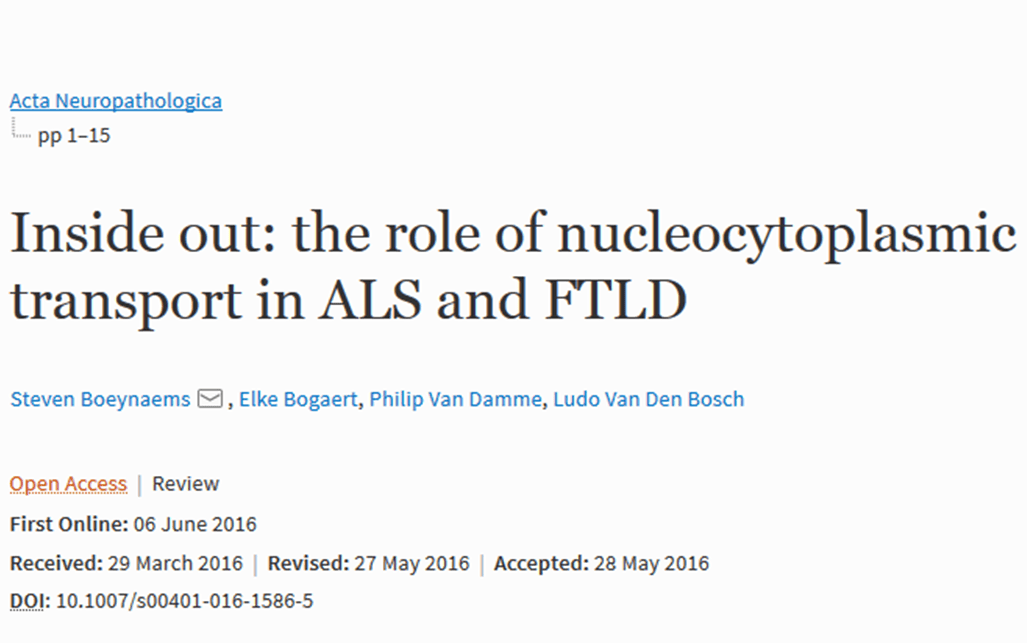 «Inside out: the role of nucleocytoplasmic transport in ALS and FTLD» has been published in Acta Neuropathologica. This research was supported in part by JPND through the STRENGTH and RiMod-FTD projects, selected under the 2012 risk factors call.
«Inside out: the role of nucleocytoplasmic transport in ALS and FTLD» has been published in Acta Neuropathologica. This research was supported in part by JPND through the STRENGTH and RiMod-FTD projects, selected under the 2012 risk factors call.
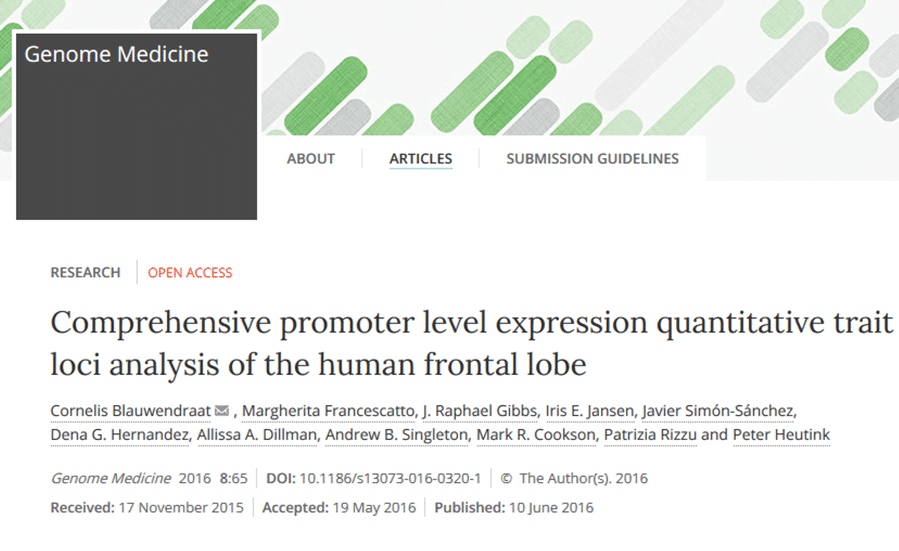 «Comprehensive promoter level expression quantitative trait loci analysis of the human frontal lobe» has been published in Genome Medicine. This research was supported in part by JPND through the RiMod-FTD project, selected under the 2012 risk factors call.
«Comprehensive promoter level expression quantitative trait loci analysis of the human frontal lobe» has been published in Genome Medicine. This research was supported in part by JPND through the RiMod-FTD project, selected under the 2012 risk factors call.
Ten international JPND working groups recommended for funding
The EU Joint Programme – Neurodegenerative Disease Research (JPND) has released the results of a “rapid-action” call to support working groups of leading scientists to bring forward novel approaches that will enhance the use of brain imaging for neurodegenerative disease research.
Ten working groups have been recommended for funding to address the methodological challenges facing different imaging modalities, among them MRI, PET, ultrasound, MEG and EEG, as well as multimodal approaches. The working groups cover a range of neurodegenerative diseases, including Alzheimer’s disease, Parkinson’s disease, Frontotemporal dementia and Huntington’s disease.
«Brain imaging has made enormous progress in recent years and is currently one of the most promising avenues in neurodegenerative disease research,» said Professor Thomas Gasser, Chair of the JPND Scientific Advisory Board. «If we can solve the challenges in the field, brain imaging could rapidly lead to faster and better diagnoses as well as a deeper understanding of the fundamental aspects and mechanisms of neurodegeneration.»
Although imaging techniques have brought about a dramatic improvement in the understanding of neurodegenerative diseases, there remain a number of significant challenges in the field. These include the execution of multi-centre clinical trials of an unprecedented scale, data transfer across imaging centres and the use of imaging for diagnostics and for measuring clinical outcomes.
To address these questions, on January 8, 2016, JPND launched a call for community-led working groups on harmonisation and alignment in brain imaging methods. The proposals recommended for funding are for top scientists to come together and propose, through ‘best practice’ guidelines and/or methodological frameworks, how to overcome key barriers to the use of imaging in neurodegenerative disease research.
The call attracted proposals with partners from across Europe and beyond, including Asia, Australia, North America and South America. A notable number of groups based in the United States were involved in responses to the call. Funding decisions were based upon scientific evaluation and recommendations to sponsor countries by a JPND peer review panel.
«This call perfectly embodies JPND’s mission and objectives,» said Professor Philippe Amouyel, Chair of the JPND Management Board. «The purpose of JPND is to strengthen coordination and collaboration in neurodegenerative disease research across different countries. We want to ensure that research efforts are not duplicated, to build consensus and to accelerate a path toward a cure that works. This call convenes groups of leading experts to hammer out the hard questions, including the challenges of interoperability and shared and open data, to allow researchers to more rapidly and more fully exploit imaging techniques going forward.»
Each working group is expected to run for a maximum of 9 months. The outputs of the working groups are to be produced by the end of the funding period, and will be published on the JPND website and used for further JPND actions. In addition, a common workshop will be organised to bring together and present the recommendations of each working group, encouraging the further exchange of ideas and wider dissemination to different stakeholder groups.
For more information on the working groups recommended for funding, click here.
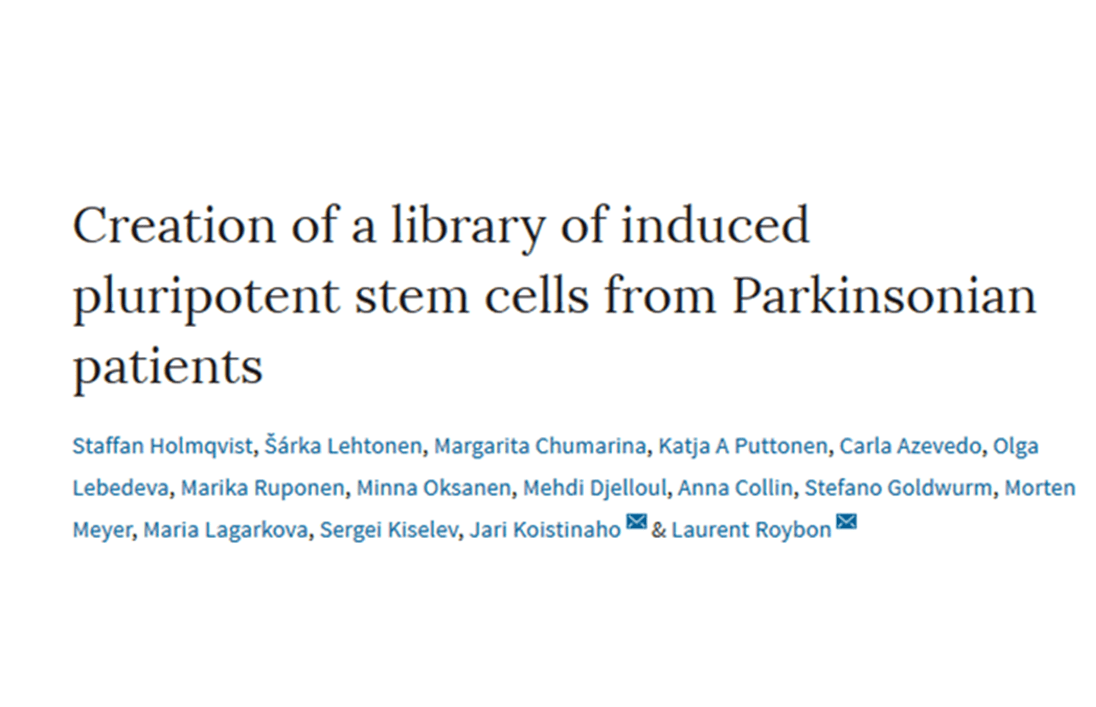 «Creation of a library of induced pluripotent stem cells from Parkinsonian patients» has been published in npj Parkinson’s Disease. This research was supported in part by JPND through the MADGIC project, selected under the 2015 JPco-fuND call.
«Creation of a library of induced pluripotent stem cells from Parkinsonian patients» has been published in npj Parkinson’s Disease. This research was supported in part by JPND through the MADGIC project, selected under the 2015 JPco-fuND call.
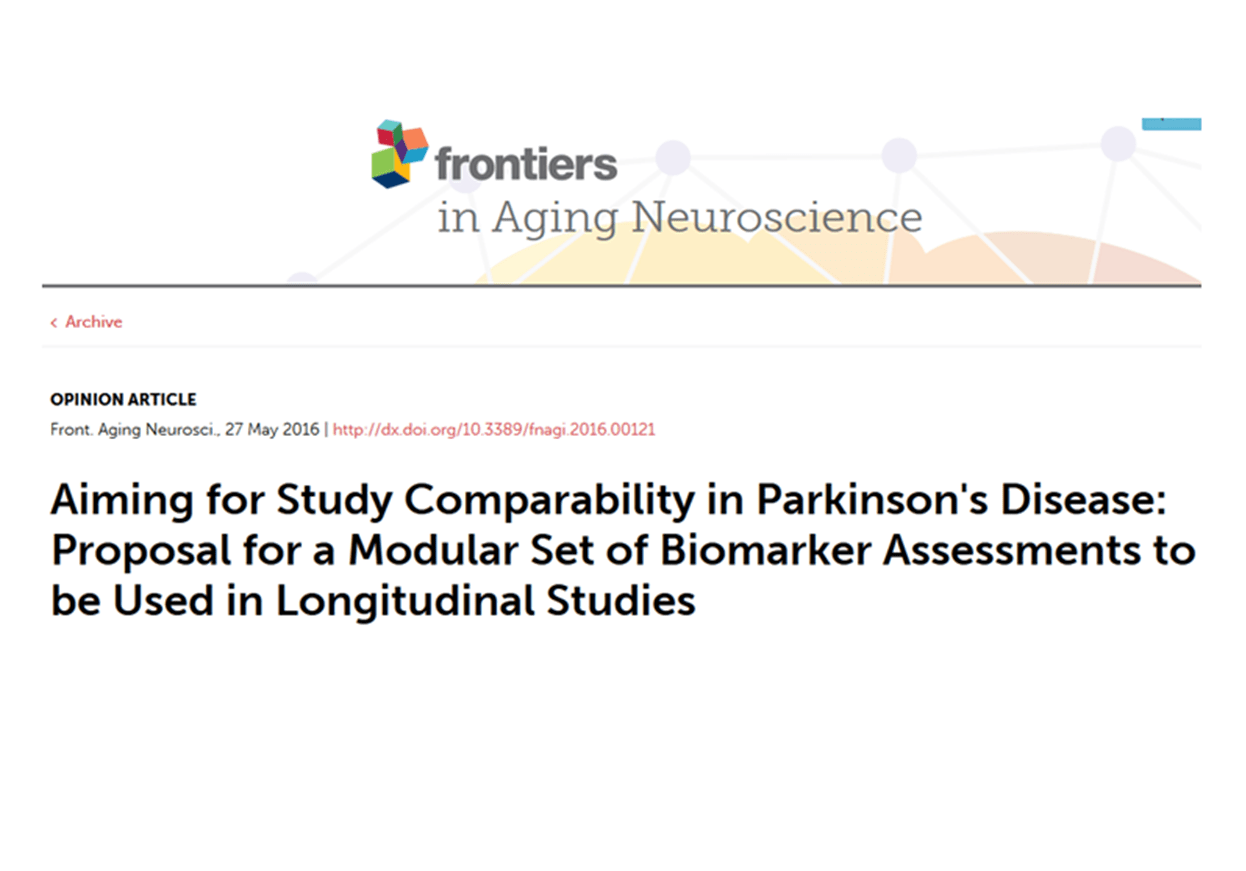 «Aiming for Study Comparability in Parkinson’s Disease: Proposal for a Modular Set of Biomarker Assessments to be Used in Longitudinal Studies» has been published in Frontiers in Aging Neuroscience. This research was supported by JPND through the BioLoC-PD working group, selected under the 2014 call for working groups to inform cohort studies in neurodegenerative disease research.
«Aiming for Study Comparability in Parkinson’s Disease: Proposal for a Modular Set of Biomarker Assessments to be Used in Longitudinal Studies» has been published in Frontiers in Aging Neuroscience. This research was supported by JPND through the BioLoC-PD working group, selected under the 2014 call for working groups to inform cohort studies in neurodegenerative disease research.
 «Presenilin 2 Modulates Endoplasmic Reticulum-Mitochondria Coupling by Tuning the Antagonistic Effect of Mitofusin 2» has been published in Cell Reports. This research was supported in part by JPND through the CeBioND project, which was selected in the 2013 call for research projects for the cross-disease analysis of pathways related to neurodegenerative diseases.
«Presenilin 2 Modulates Endoplasmic Reticulum-Mitochondria Coupling by Tuning the Antagonistic Effect of Mitofusin 2» has been published in Cell Reports. This research was supported in part by JPND through the CeBioND project, which was selected in the 2013 call for research projects for the cross-disease analysis of pathways related to neurodegenerative diseases.
«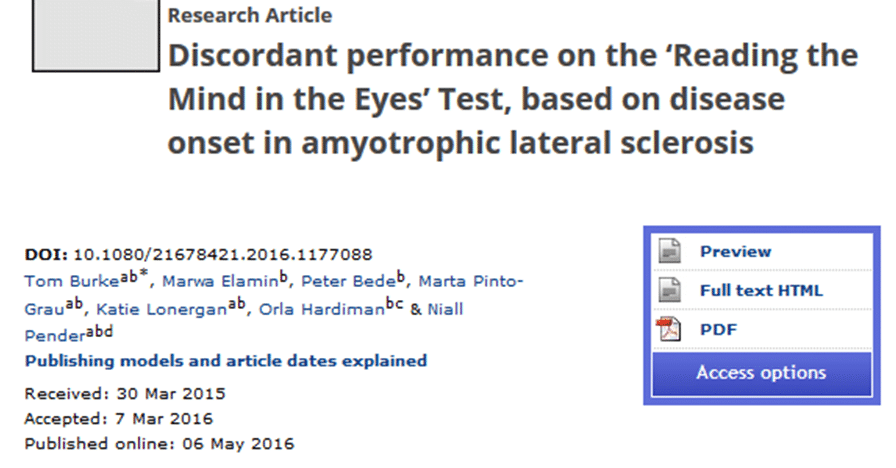 Discordant performance on the ‘Reading the Mind in the Eyes’ Test, based on disease onset in amyotrophic lateral sclerosis» has been published in Amyotrophic Lateral Sclerosis and Frontotemporal Degeneration. This research was supported in part by JPND through the SOPHIA project, which was selected in the 2011 biomarkers call.
Discordant performance on the ‘Reading the Mind in the Eyes’ Test, based on disease onset in amyotrophic lateral sclerosis» has been published in Amyotrophic Lateral Sclerosis and Frontotemporal Degeneration. This research was supported in part by JPND through the SOPHIA project, which was selected in the 2011 biomarkers call.
